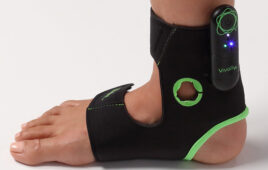3D visualization and augmented reality for surgery
So what coming out today could become the next great medtech disruptor? Here’s one educated guess: augmented reality for surgery.
In 2016, the Cleveland Clinic predicted that 3D visualization and augmented reality would be a top disruptor of 2017. The technology is now making its way into operating rooms.
For years, surgeons have relied on X-Rays, microscopes and other camera systems to get a visual idea of areas to operate on. As one of the top disruptors of healthcare, bringing augmented reality to operation rooms has allowed surgeons to get a clearer picture of exactly what they need to do while gaining a better anatomical and technical understanding of surgery than previously available.
Companies like Royal Philips are using augmented reality to help surgeons perform image-guided open and minimally-invasive spinal surgery. The system uses high-resolution optical panels attached to a flat panel X-ray detector to create 3D images of a patient’s spine. This creates a 3D augmented reality view of the patient’s anatomy to improve procedure planning and operation times while also improving surgical tool navigation and implant accuracy.
Researchers have also successfully used high-definition digital camera images to create a 3D image of facial surfaces and used computed tomography scans to get digital information about bones in the face to create 3D images for facial reconstruction surgery.
Medical school students have also used commercial virtual reality glasses to create an augmented reality training platform.





Little credit to Dr. Frederic Foley who in the early 1930 some 30 years prior to Dr. Thomas Fogarty placed a balloon on an indwelling urethtal catheter. Confident any work by Dr. Fogarty probably involved a review of a Foley catheter as he began working on his catheter. Actually CR Bard began distributing the Foley catheter in the 1930 as well. Although Paul Raiche with the David Rubber company was awarded the Patent for the device the World would only know the product as The Foley… over 200million are utilized annually.
For a follow up article it would be interesting to track reimbursement policies and medical innovations. Since these policy can “push” innovation. At Poiesis this is why we launched the Duette catheter to reduce CAUTI events. CMS does not pay for never events so we designed a device that lowers rates 13:1 so far over the single balloon Foley. At $11,419 cost per infection it’s a game changer, only brought to the market due to reimbursement policies.
Appreciate the look back, alway good to know the past.
That’s a good point about Dr. Foley, Greg. Fogarty’s work, it seems, was such a game-changer because he figured out how to make balloon catheter work in the vasculature. Surgeons not having to dig around looking for a blood clot — it was a big deal. … That’s interesting about how reimbursement policies enabled the launch of your catheter. Think we’ll see more innovation like this, since CMS is driving toward alternative payment models post-Obamacare?
Certainly these are all game changers, although the first few were probably the biggest game changers ever. Certainly this is a relevant collection of major accomplishments. Thanks for publishing it!!